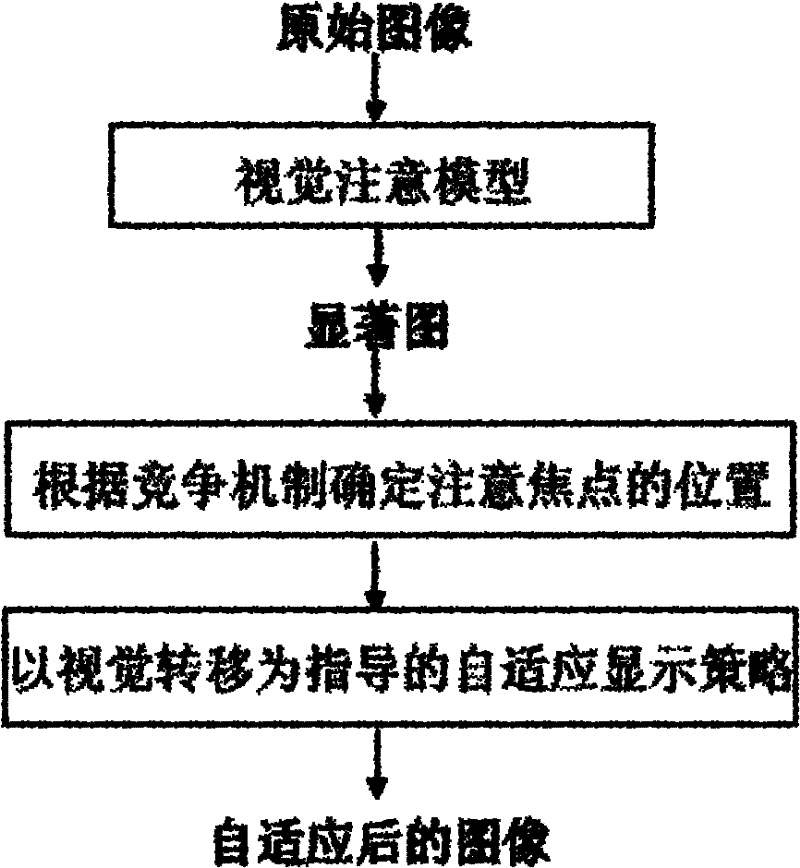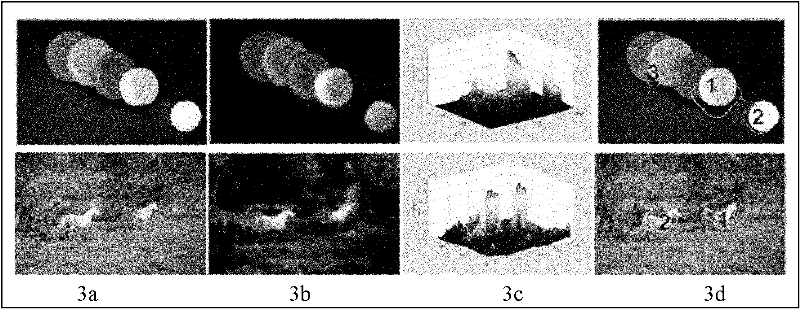Method for adaptively displaying image by taking visual transfer mechanism as guide
A display method and self-adaptive technology, applied in multimedia signal processing and image fields, can solve problems such as loss of important areas, influence on understanding of image content, distortion distance between mother bird and branches, etc., and achieve the effect of small content loss and good browsing experience
- Summary
- Abstract
- Description
- Claims
- Application Information
AI Technical Summary
Problems solved by technology
Method used
Image
Examples
Embodiment Construction
[0021] The present invention first extracts the salient region of the image effectively by fusing the visual attention model of local and global contrast salience; then determines the position of the attention focus according to the competition mechanism; finally according to the size of the target display screen and the transfer sequence of the focus to determine the final display strategy. After determining the display strategy, the cumulative size of the saliency map energy is further adjusted to minimize the visual distortion of the important area of the image, that is, the area that the viewer pays attention to, and at the same time fully satisfy the process of the user's understanding of the image content. Satisfy the user's browsing experience well.
[0022] figure 1 Provided the basic realization block diagram of the inventive method, according to figure 1 Shown flow process, method of the present invention comprises following specific steps:
[0023] 1. Constru...
PUM
 Login to View More
Login to View More Abstract
Description
Claims
Application Information
 Login to View More
Login to View More - R&D Engineer
- R&D Manager
- IP Professional
- Industry Leading Data Capabilities
- Powerful AI technology
- Patent DNA Extraction
Browse by: Latest US Patents, China's latest patents, Technical Efficacy Thesaurus, Application Domain, Technology Topic, Popular Technical Reports.
© 2024 PatSnap. All rights reserved.Legal|Privacy policy|Modern Slavery Act Transparency Statement|Sitemap|About US| Contact US: help@patsnap.com










